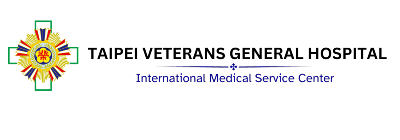Idiopathic Scoliosis Correction
Feature Summary
Taipei Veterans General Hospital scoliosis team has accumulated over 2,000 cases, the highest in Taiwan. Our team's achievements include high quality surgery, high correction rate, very low nerve complication rate, very low infection and over complication rate, high functional recovery and patient satisfaction, leading the best treatment of scoliosis in Taiwan.
Overview
Scoliosis is a sideway curve in the spine commonly seen in children and adolescents. There are several different types of scoliosis. By far, the most common type is "idiopathic," which means the exact cause is not known. Treatment for scoliosis may take several forms depending on the age of the patient, the type of scoliosis and the tendency of the curve to worsen. Severe scoliosis needs surgical correction to prevent low back pain later in life, trunk deformity, and even daily activities limitation. The goal of spinal surgery for scoliosis is to fuse the vertebrae so the spine cannot bend and to correct deformity. The doctor will try to correct the curve by 50 percent or more.
Features
Taipei Veterans General Hospital has established the most professional and comprehensive scoliosis care team, integrating orthopedics, intra-operative neuromonitoring team, orthotist, physical therapists, anesthesiologist, and nursing. We started scoliosis correction surgery since 1984 and has accumulated over 2,000 cases, the highest in Taiwan, and has introduced the latest techniques and implants globally. Our team's achievements include a high success rate and functional recovery, leading the treatment of scoliosis in Taiwan. They also have a high quality in spinal scoliosis surgery with very low nerve complication (0% among 2,000 cases), infection rate, overall complications, and high post-operative functional recovery and satisfaction rates. We also established an Enhanced Recovery After Surgery (ERAS) pathway for scoliosis surgery, which is the first ERAS scoliosis care team in Taiwan. The ERAS pathway that combines evidence-based perioperative strategies to accelerate the functional recovery process, less postoperative pain and improve surgical outcomes.
Procedure
The scoliosis correction surgery will be done in a traditional posterior open approach, which means a longitudinal posterior incision will be made and to exposure the spine bony structure. The correction happens when metal rods insertion. The rods are attached to the spine by screws, hooks, and/or wires. Metal rods are typically used to hold the spine in place until fusion happens. Spinal fusion was performed after implantation and correction. Bone graft was harvested using local autologous bone chip, artificial bone substitute or form bone bank.

Notification
Risks and complications
・Infection: Antibiotics are regularly given to the patient before, during, and often after surgery to lessen the risk of infections.
・Bleeding: A certain amount of bleeding is expected, but this is not typically significant. A portion of the blood lost during surgery may be saved and given back to the patient (using CellSaver).
・Pseudarthrosis: Older teenagers and adults who smoke are more likely to develop a pseudarthrosis. This is a condition where there is not enough bone formation. It can cause pain or rod breakage. If this occurs, a second surgery may be needed in order to obtain a solid fusion.
・Nerve injury: It is possible that the nerves or blood vessels may be injured during these operations. The nerve function will be monitor throughout surgery to lessen the risk. These complications are very rare (< 1%).
Estimated Cost
For estimated medical costs, please contact International Medical Services Center.

